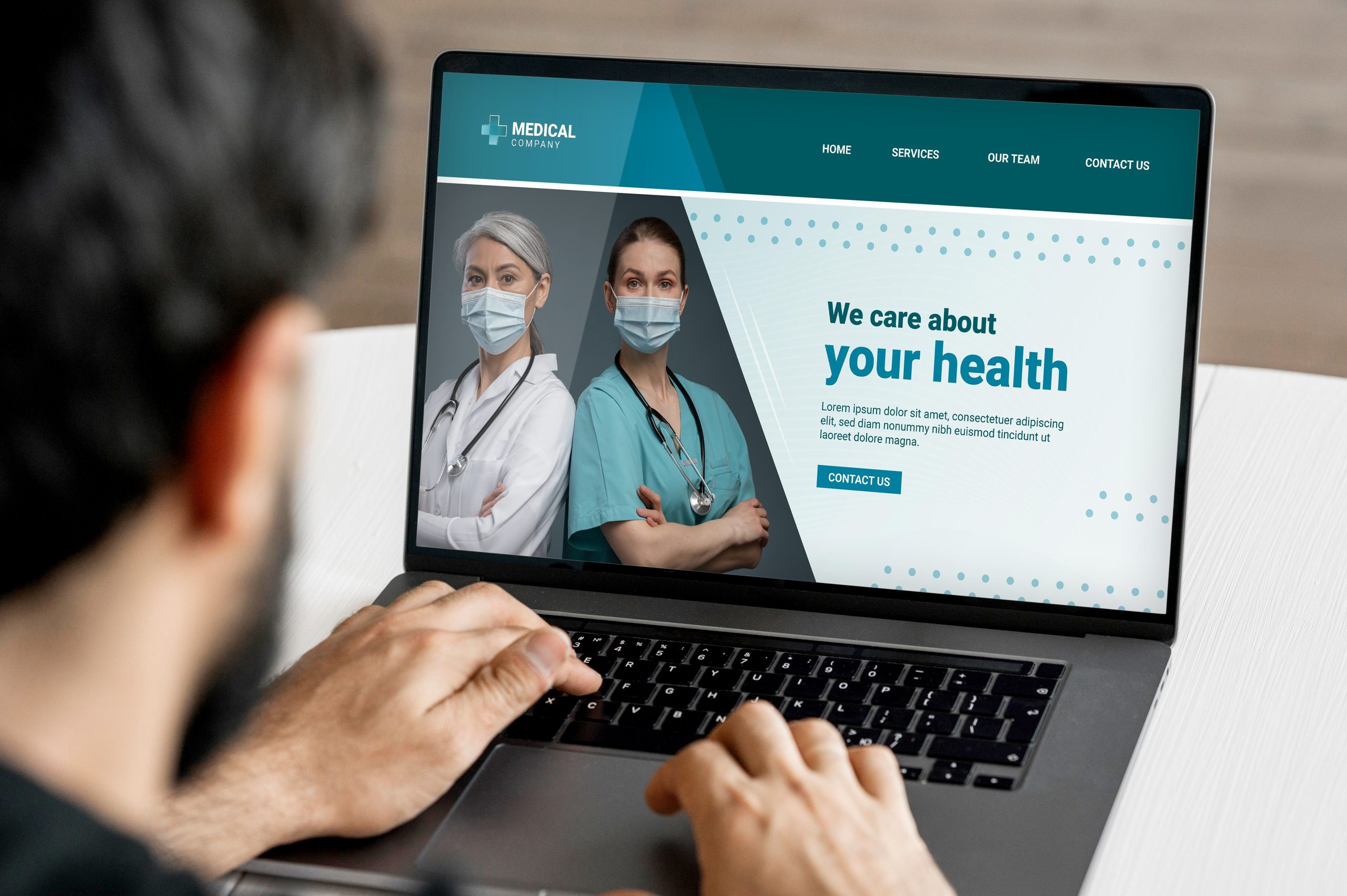In the digital age, medical practices’ online presence has become just as important as the quality of care they provide in person. A well-designed website serves as the gateway to a patient’s first impression, and in a vibrant and diverse place like Fort Lauderdale, standing out requires more than basic functionality.
Understanding the principles of UX/UI design for medical websites goes beyond aesthetics,. It focuses on creating a seamless, efficient, and trustworthy digital experience. With the right strategies, medical providers in Fort Lauderdale can transform their websites into powerful tools for patient engagement, education, and retention.
Why UX/UI Design Matters for Medical Websites
UX (User Experience) and UI (User Interface) are interrelated concepts that form the backbone of any successful website. While UI focuses on the visual elements, such as layout, color schemes, and typography, UX dives deeper into the user’s journey, ensuring that their interaction with the website is seamless and satisfying. For medical websites, the stakes are particularly high. Patients visit these sites seeking vital information, whether it’s booking an appointment, understanding medical conditions, or finding emergency contact details. A poorly designed website can lead to frustration, mistrust, and, ultimately, lost patients.
In Fort Lauderdale, where medical practices compete in a bustling market, creating a digital experience tailored to the local demographic is crucial. The city’s unique blend of residents, ranging from retirees to working professionals and international visitors, necessitates a design that caters to varying levels of tech-savviness and healthcare needs.
Key benefits of great UX/UI design for medical websites include:
- Enhanced Patient Trust: Clean, professional design creates a sense of credibility and competence.
- Improved Accessibility: A well-designed interface ensures that users of all abilities can navigate the site effortlessly.
- Increased Engagement: A user-friendly experience encourages visitors to stay longer, explore services, and take action.
Understanding the Unique Needs of Medical Website Users
The first step to crafting an effective medical website is understanding the audience. Patients visiting these sites are diverse in age, tech-savviness, and needs. Some may be tech-savvy millennials looking for online appointment booking, while others might be elderly individuals needing straightforward navigation.
Building Trust Through Visual Design
Trust is paramount in healthcare. A medical website should immediately convey professionalism, empathy, and competence. A clean layout, calming color palettes, and professional photography can enhance visual appeal and build trust. Blue, green, and white are commonly used in medical web design, as they evoke feelings of calmness, cleanliness, and reliability.
Consistency in branding also matters. Ensure that the website’s logo, typography, and imagery align with the clinic’s offline branding, creating a cohesive experience that reinforces reliability.
Simplifying Navigation for Better User Experience
Intuitive navigation is essential for medical websites. Patients often need to find critical information, such as services offered, contact details, or emergency care options, within seconds. Clear menus, logical site architecture, and a search bar are non-negotiable elements of great UX design.
Organize content into logical categories such as:
- Services and specialties
- About the practice or physicians
- Patient Resources
- Insurance and billing information
To make the next steps simple for users, include prominently placed CTAs (Call-to-Action) like “Book an Appointment” or “Call Now” on every page.
Prioritizing Mobile Responsiveness
Mobile responsiveness is critical in Fort Lauderdale, where a significant portion of the population relies on smartphones for internet access. A responsive design ensures that a website looks and functions well on any device, whether it’s a desktop, tablet, or smartphone.
A mobile-friendly medical website adapts seamlessly to smaller screens, offering easy navigation, readable text, and fast loading speeds. Patients should be able to find a doctor, read reviews, or book appointments on their mobile devices without any hassle.
Accessibility for All Patients
An often overlooked aspect of UX/UI design is accessibility. Medical websites must be inclusive, accommodating users with disabilities or impairments. Following Web Content Accessibility Guidelines (WCAG) can help ensure compliance with accessibility standards.
Key features to improve accessibility include:
- Text alternatives for images (alt text)
- Clear, readable fonts with sufficient contrast
- Keyboard navigation options for users who can’t use a mouse
- Descriptive links that provide context for screen readers
By making a website accessible, medical providers in Fort Lauderdale can serve a broader audience and demonstrate their commitment to inclusivity.
Highlighting Key Services and Information
Patients often visit medical websites to learn about services or procedures. Designing pages that clearly explain offerings is vital. Use a combination of concise copy, bullet points for key information, and visuals like infographics or videos to engage users.
Service pages should include:
- A detailed description of the procedure or service
- FAQs to address common patient concerns
- Information on expected outcomes and recovery times
Adding patient testimonials or case studies can further reassure visitors about the quality of care.
Online Appointment Booking and Forms
One of the most sought-after features of medical websites is the ability to book appointments online. Integrating an intuitive scheduling system can significantly enhance user experience.
Ensure that the booking process is straightforward and requires minimal steps and information. Offer options for users to select their preferred doctor, date, and time. Secure online forms for pre-appointment paperwork can also save time for both patients and staff.
Search Engine Optimization (SEO) for Visibility
Even the most beautifully designed website is ineffective if patients can’t find it. SEO ensures that a medical website ranks high on search engine results, increasing visibility among Fort Lauderdale residents.
Incorporate relevant keywords like “Fort Lauderdale family doctor” or “urgent care in Fort Lauderdale” into page titles, headings, and content. Use meta descriptions that succinctly describe the services offered. A well-optimized website attracts more visitors and positions the practice as a local leader in healthcare.
Speed and Performance
Speed is a crucial factor in user experience. A slow-loading website can frustrate users and lead to higher bounce rates. Medical websites should load within a few seconds, regardless of the device being used.
Compress images, minimize code, and use reliable hosting services to improve website speed. Also, the site’s performance should be tested regularly, and any issues should be resolved promptly.
The Importance of Security and Privacy
Medical websites handle sensitive patient information, making security a top priority. Implement robust security measures, including SSL certificates and secure data storage, to protect patient data. Clearly outline privacy policies to reassure users that their information is safe.
HIPAA compliance is particularly critical for medical websites in the U.S., as it governs the protection of health information. Working with developers who understand these regulations is essential to ensure compliance.
Integrating Patient Education Resources
A medical website can be more than a promotional tool, it can also serve as an educational platform. Offering resources like blogs, FAQs, and videos on health topics can engage patients and position the practice as a trusted authority.
For example, a Fort Lauderdale clinic could publish articles on seasonal allergies or tips for maintaining a healthy lifestyle in the Florida climate. Educational content drives traffic and enhances patient loyalty.
Building Relationships Through Personalization
Personalization is a powerful UX strategy that helps build strong relationships with patients. Consider integrating features like patient portals, personalized appointment reminders, or customized content based on user preferences.
A patient portal that allows users to view their medical history, download test results, and communicate with doctors fosters a sense of connection and convenience.
Conclusion: The Fort Lauderdale Advantage
Creating an exceptional medical website for Fort Lauderdale’s healthcare industry requires a thoughtful UX/UI design approach. By prioritizing trust, accessibility, mobile responsiveness, and user engagement, medical practices can establish a robust online presence that attracts and retains patients.
Fort Lauderdale’s vibrant and diverse community offers unique opportunities for medical practices to connect with patients on a deeper level. By embracing UX/UI strategies tailored to local needs and preferences, practices can create functional, engaging websites that resonate with their audience.
A well-designed medical website goes beyond aesthetics. Features like personalized content, intuitive navigation, and seamless functionality set a practice apart in a competitive market. Investing in high-quality UX/UI design is about more than keeping up with technology—it’s about enhancing the patient experience from their very first online interaction.
By prioritizing usability and fostering trust, Fort Lauderdale practices can build lasting relationships with their patients, ensuring their online presence reflects the high-quality care they provide in person. A thoughtfully designed website becomes the foundation of a positive patient experience, bridging the gap between digital interaction and exceptional in-office care.
![In the digital age, medical practices’ online presence has become just as important as the quality of care they provide in person. A well-designed website serves as the gateway to a patient’s first impression, and in a vibrant and diverse place like Fort Lauderdale, standing out requires more than basic functionality. Understanding the principles of […]](https://webmarketflorida.com/wp-content/uploads/2018/02/logo.jpg)
![In the digital age, medical practices’ online presence has become just as important as the quality of care they provide in person. A well-designed website serves as the gateway to a patient’s first impression, and in a vibrant and diverse place like Fort Lauderdale, standing out requires more than basic functionality. Understanding the principles of […]](https://webmarketflorida.com/wp-content/uploads/2017/12/logo-2.png)



